Legal Highs and Research Chemicals
Humans have long desired to cast aside the veil and experience alternative mental and physical sensations.
From spirituality to recreational purposes, psychoactive substances are one of the defining rituals across civilizations. However, time shifts the perception of psychoactive substances and bounces from legal to illegal.
Below, we’ll discuss the history of research chemicals and legal highs to help you understand their foundation.
An Introduction to the History of Psychoactive Substances
Before RC’s (research chemicals) and legal highs — individuals across time consumed mushrooms, peyote, ayahuasca, cannabis, and more.
The first written record of any civilization consuming psychoactive substances is credited to the Greek historian Herodotus. In The Histories, Herodotus writes about ancient Scythians throwing “hemp” on hot stones and inhaling the smoke.
Considering cannabis (i.e., hemp) was a necessary crop for textiles, it’s clear why early civilizations quickly caught on to the psychoactive allure (whether spiritual, medicinal, or recreational) of cannabis.
As we continue through time, Mesoamerica was home to the Maya, Olmec, Zapotec, and Aztecs — all of which harnessed the power of psychoactive substances for healing rituals and religious ceremonies.
Mesoamerican cultures induced new states of consciousness via hallucinogenic mushrooms, peyote, ayahuasca, datura, water lily, salvia, and even toad skin (Bufo spp.).
Ultimately, civilizations across time have utilized psychoactive substances and entwined them to become an intrinsic aspect of their communities. Although our society has lost this profound connection — legal highs and research chemicals empower individuals to reconnect with their mind, body, and spirituality at a different level.
The Beginning of Research Chemicals and Legal Highs
Now, let’s begin a new chapter of psychoactive substances — research chemicals and legal highs.
The earliest (and most notable) legal highs and RCs are Spice (JWH-018) and Mephedrone. Below, you’ll discover how Mephedrone and Spice began their journey in the world of research chemicals and legal highs.
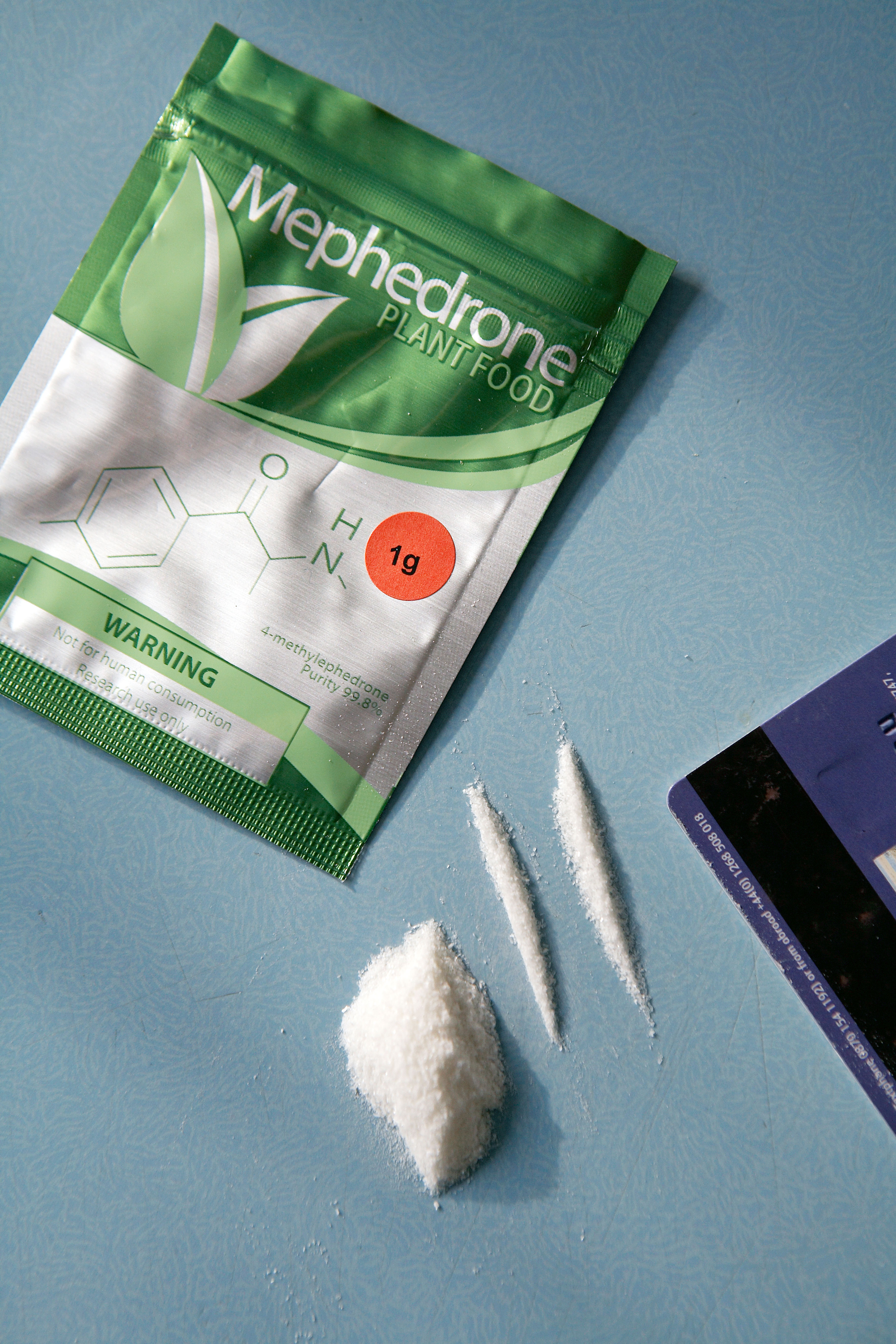
An Introduction to Mephedrone
Mephedrone was first synthesized as early as 1929 but was quickly forgotten.
However, mephedrone’s popularity surged in 1999 once it was re-discovered by an anonymous chemist for its stimulating properties similar to MDMA and cocaine. Known as Kinetic, the unknown chemist claimed that they were “bored” and had a “few fun reagents lying around” and decided to make some 4-methylmethcathinone (mephedrone).
Kinetic described the effects similar to MDMA, spurring Israeli mathematician Ezekiel Golan (also known as Dr. Zee) into commercial production of mephedrone.
The Rise of Dr. Zee and Commercially Available Mephedrone
Although Dr. Zee is a mathematician by trade — his passion lies in legal highs.
Soon after learning about mephedrone’s effects, Dr. Zee quickly altered his career path and began manufacturing legal highs such as mephedrone.
During this period, mephedrone circulated among underground communities and avoided detection until the early 2000s, when mephedrone became illegal in Israel. However, Dr. Zee and other legal high companies (Neorganics) re-formulated mephedrone-like substances to skirt regulators.
Primarily, Dr. Zee created mephedrone with cathinone — the primary alkaloid found in khat. However, cathinone-based mephedrone was deemed illegal in Israel in 2004, forcing Dr. Zee and Neorganics to continue modifying mephedrone to stay one step ahead of laws.
Mephedrone Reaches a Global Audience
The European Union realized that legal highs outperformed illicit drugs to their undefinable nature. On the one hand, legal highs produce effects similar to banned substances. On the other hand, legal highs are modifiable and can fall out of bounds with current drug laws.
Thus, the Psychonaut Research Project was created to identify new legal highs and research chemicals. In 2007, the E.U.-funded Psychonaut Research Project stumbled across mephedrone via an online source in 2008.
Before this discovery, French police seized tablets of mephedrone in 2007. Although the police believed they seized MDMA, lab results proved it was mephedrone.
Soon after, stories of mephedrone cropped up across the globe as legal high enthusiasts celebrated its stimulating effects. From Australia to the United States, mephedrone made a splash among recreational users and authorities.
Blanket Ban of Mephedrone
Mephedrone’s popularity sky-rocketed across the globe due to its availability at electronic music festivals, head shops, and online legal high and research chemical websites.
In 2010, the UK moved to ban the sale and possession of mephedrone, along with its derivatives and variants. Soon after, countries across the globe passed legislation to prohibit mephedrone — including the United States.
The Different Types of Mephedrone Available Today
Ultimately, mephedrone is illegal when purchased as a recreational substance.
Luckily, legal variations and derivatives of mephedrone are available when bought as a research chemical. For example, 2-MMC in crystal chunk form can be used in a lab for research purposes.
If you’re searching for cathinone-based research chemicals like those found here at Express Highs, you’re in luck.
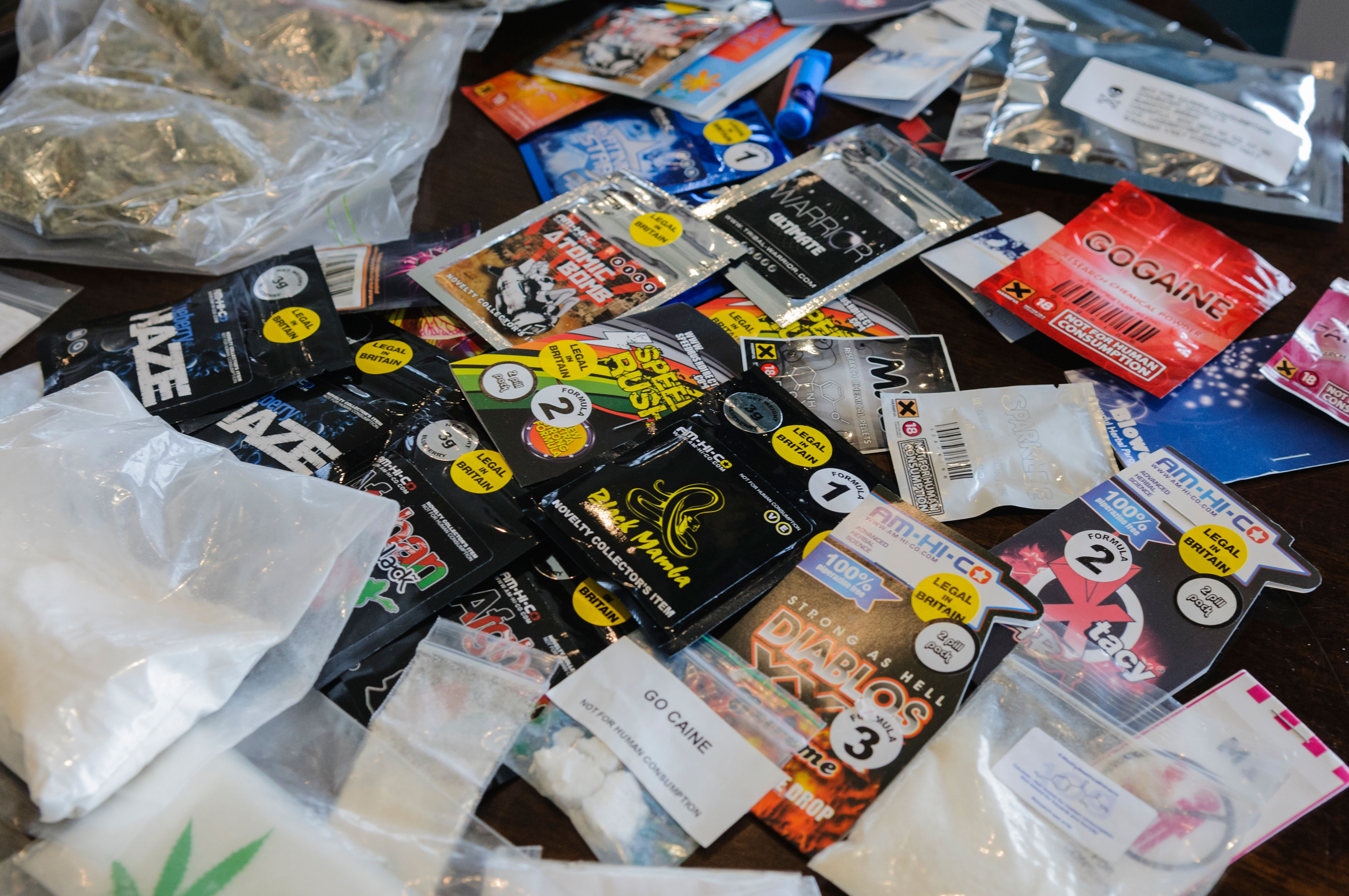
An Introduction to Spice
Spice is one of the most renowned legal highs because it paved the way for synthetic cannabinoids.
Spice, along with other synthetic cannabinoids, binds to CB1 and CB2 receptors within the body and produces similar (and at times more potent) effects than cannabis.
Below, you’ll learn about the history of spice, its derivatives, and what spice looks like in today’s modern market.
The Beginning of Spice and its Introduction to the Global Market
John William Huffman was a professor at Clemson University in South Carolina.
Huffman was the first to synthesize novel cannabinoids and also worked on producing substances that targeted specific endocannabinoid-based receptors in the human body.
Huffman’s pioneering research began in 1984 when he and his team synthesized delta-9 THC.
By 2004, Huffman’s team created over 400 novel cannabinoids for research purposes to study human endocannabinoid interaction. However, Huffman’s novel cannabinoids were soon found in designer drugs called Spice and K2 in Germany by the late 2000s.
Overall, head shops in Germany were selling K2 and Spice as legal cannabis alternatives. Although this revelation saddened Huffman, he understood that he could not do anything to prevent its spread worldwide.
JWH-018 Makes a Splash
Named after its creator, the JWH series contains various types of Spice.
However, JWH-018 is recognized as the most potent and accessible form to create. Thus, JWH-018 is the most common form of Spice found on legal high and research chemical websites.
JWH-018 is sold as an herbal blend and has since become extremely popular worldwide. Spice and K2 were notable products from Europe to the United States at head shops until their eventual ban in 2012.
Buying Spice and Spice Derivatives Today
Fast-forward to our current timeline, and you’ll discover that you can still buy Spice and its derivatives.
Herbal blends and herbal incense are sold at legal highs and research chemical websites, such as Express Highs. Ultimately, herbal incense is not meant for human consumption but for aromatherapy.
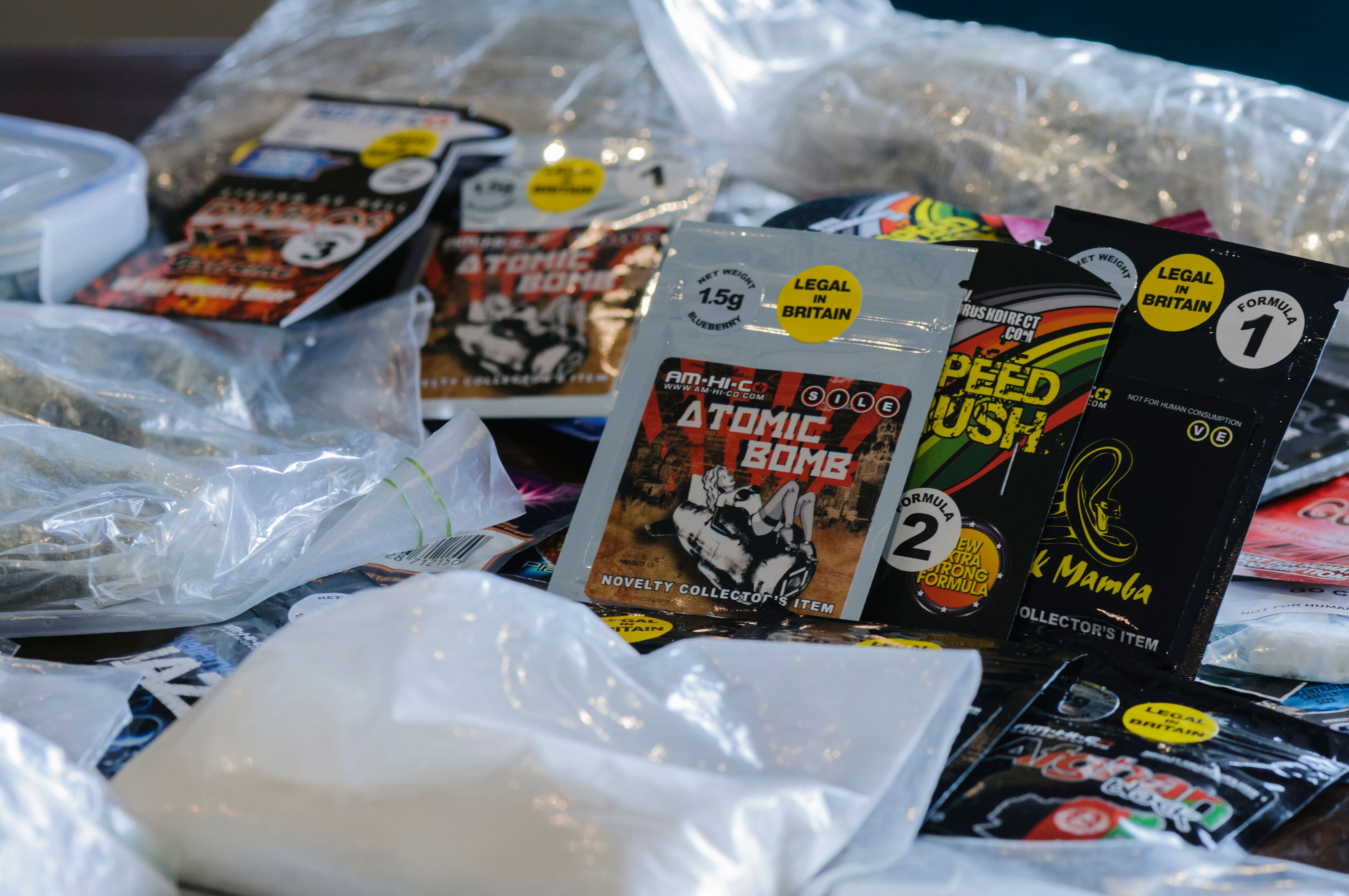
The Current Legal High and Research Chemical Market
As we move forward from the early days of mephedrone and Spice, let’s look at the current legal high and research chemical market.
Below, we’ll briefly describe various products within the categories of legal highs and research chemicals, so you understand what’s available — and what’s not.
Available Legal Highs
Legal highs span various products such as party pills and herbal incense.
Although international laws constantly change, these legal high products have stood the test of time. Soon, you’ll discover all the different legal high products available at your fingertips.

Herbal Incense
Herbal incense is some of the most popular legal high products in our current day.
From relaxing to uplifting, herbal incense blends are the perfect way to experience synthetic cannabinoids — especially if your country prohibits cannabis.
Numerous herbal incense blends are available, and it can be overwhelming to make a clear choice. Luckily, you can always find top-shelf herbal incense blend variety packs at Express Highs.
Additionally, liquid herbal incense is also available at Express Highs!
As we previously mentioned, herbal incense can only be sold as an incense — a form of aromatherapy. All forms of consumption are strictly prohibited in many jurisdictions worldwide.
Resin Herbal Incense
Since the introduction of cannabis concentrates, the legal highs market quickly managed to create something similar: resin herbal incense.
Resin herbal incense are delicious slabs of resin packed with potency. Due to the ongoing ban regarding JWH, all resin herbal incense products are JWH-free.
Furthermore, resin herbal incense are similar to hashish, making them one of the few products that exceed the standards of top-shelf hash.
Bath Salts
Bath salts began their meteoric rise in popularity in 2010.
Initially, bath salts were created with synthetic cathinones, but with their current legal standings, many bath salts are crafted without using banned substances.
In any case, all bath salts available at Express Highs are of the highest quality and do not contain any fillers or additional ingredients.
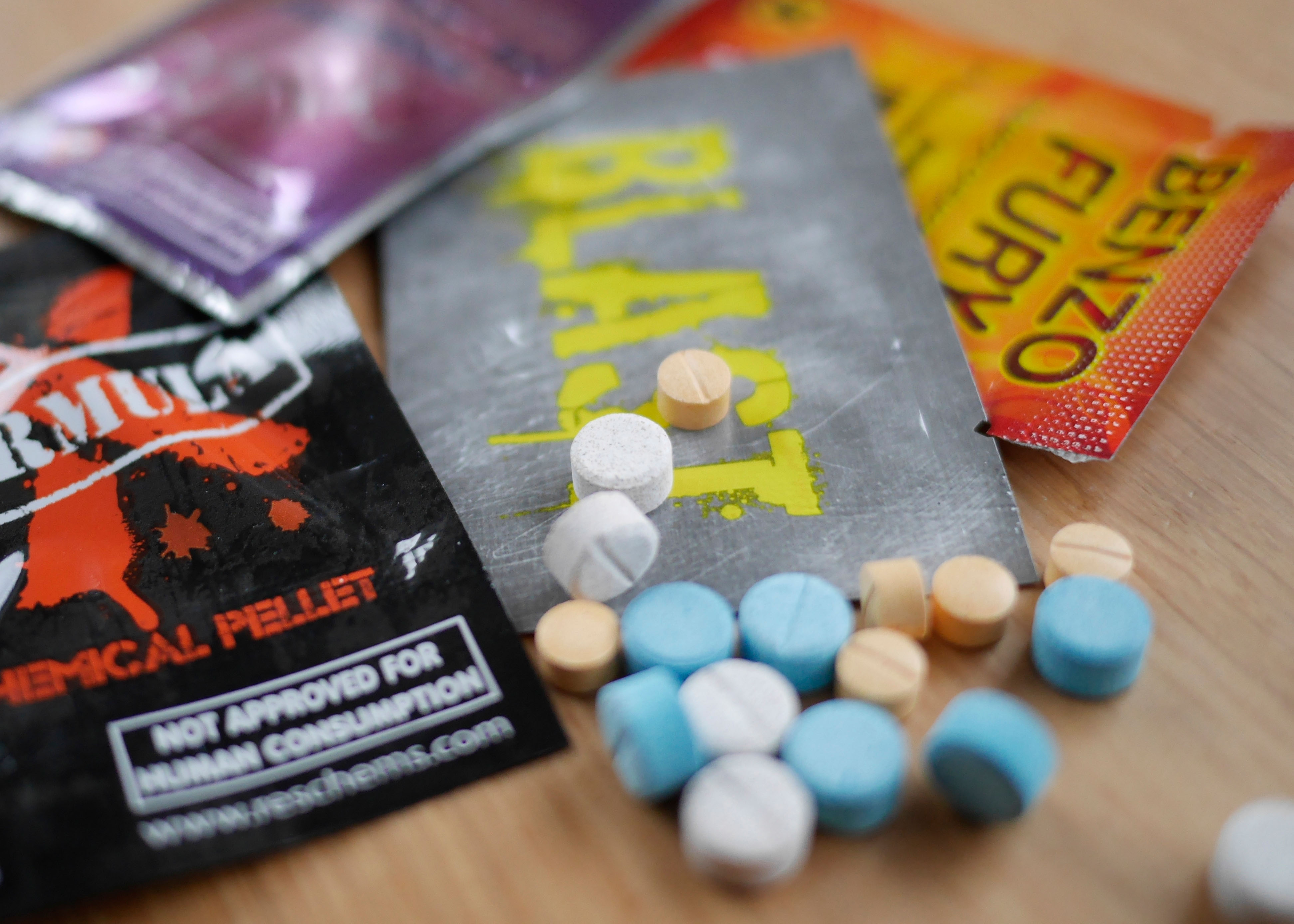
Party Pills
Party pills have been part of the legal highs scene since the early 2000s.
From BZP to pFPP-based ingredients, party pills have a long history of usage at clubs and music festivals. However, various components are banned, which is why many party pills now use proprietary ingredients to ensure legal compliance.
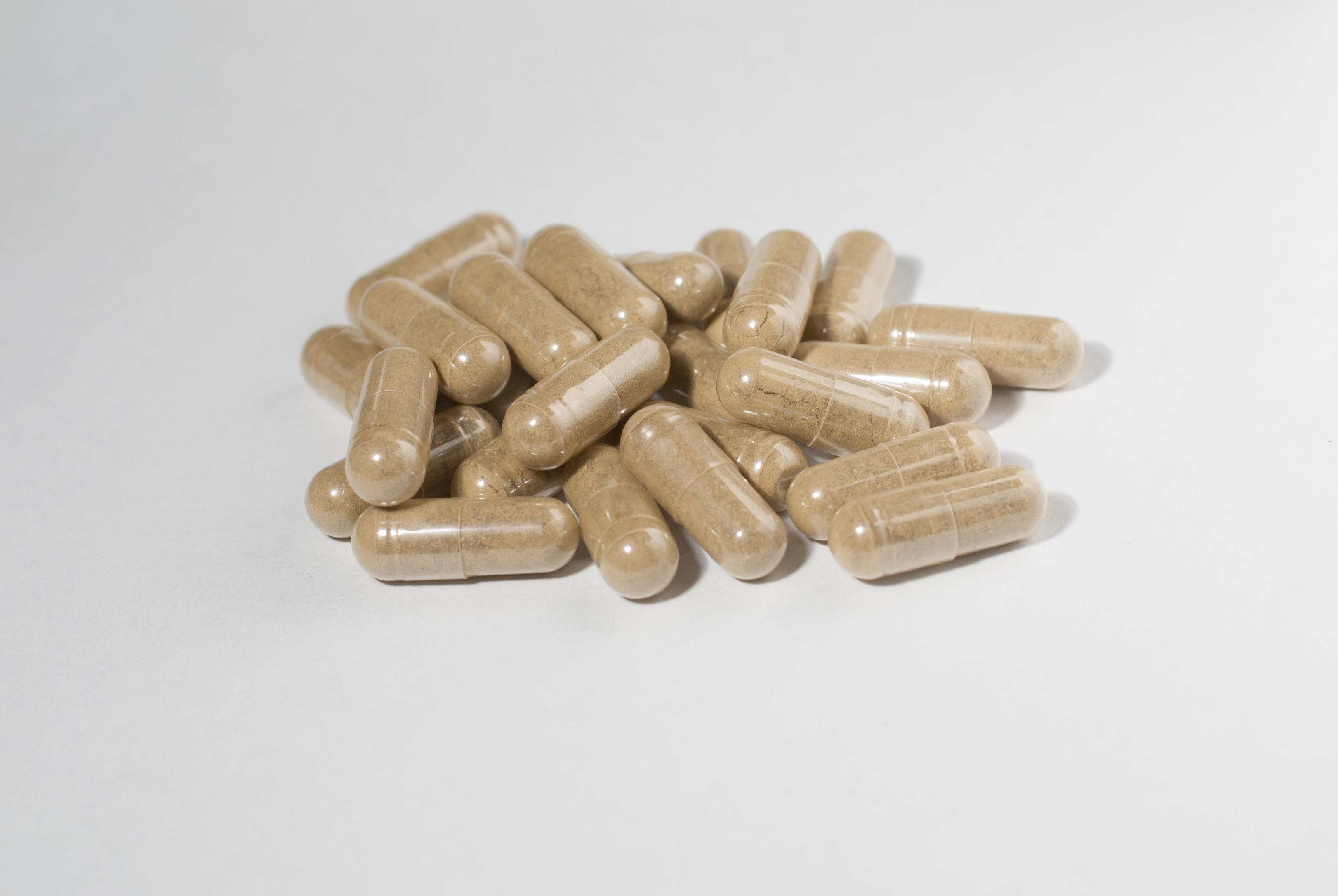
Kratom
Kratom is derived from Mitragyna speciosa and has been used since the 1800s.
However, Kratom’s popularity didn’t fully take off until 2015, when it was readily available in head shops in the United States and beyond. Although various countries have banned Kratom, you can find high-quality powder-based kratom at Express Highs.
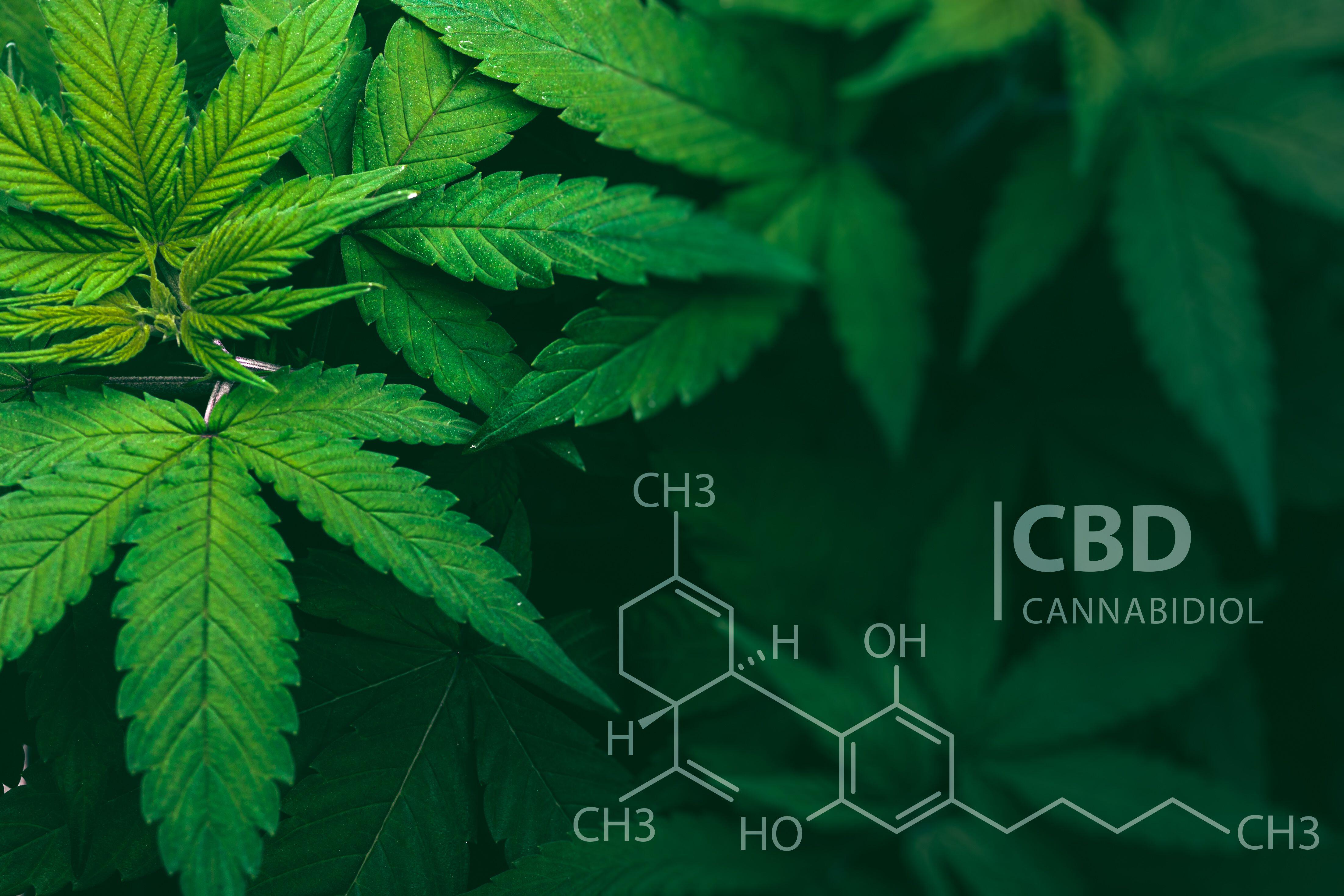
CBD
CBD was first discovered in 1940 by Roger Adams but didn’t gain popularity until the early 2000s due to its medical significance.
Now that most countries recognize CBD for its medical benefits, it is by far the most popular legal high product on the market. From CBD hash to CBD oil, you’ll find an ample selection at Express Highs.
Herbal Extracts
Herbal extracts are another range of legal highs that gained extensive popularity in the early 2000s.
Substances like salvia and kratom gained fame for their ability to generate visual hallucinations and euphoria. Traditionally, kratom and salvia were only available in dried leaf form, but now Express Highs offers the next generation: herbal extracts for increased potency.

Available Research Chemicals
Below, we’ll discuss the history of the current research chemicals available for sale.
Arylcyclohexylamine Research Chemicals
Arylcyclohexylamine is known to produce effects similar to ketamine.
Discovered in the early 1900s and first synthesized in 1956, arylcyclohexylamine’s popularity began in the 1970s with the rise of PCP and other similar substances.
Now, arylcyclohexylamine-based products are available only as a research chemical and in many different forms at Express Highs.
Benzodiazepine Research Chemicals
From benzos to blues, benzodiazepine is a notable depressant that’s been recreationally used since the 1970s.
Benzodiazepine was first synthesized in 1955 by Leo Sternbach. However, Sternbach left the project in favor of other research. Two years later, Earl Reeder picked up the project and confirmed the compound’s use as a potent sedative.
Although benzodiazepines are regulated or scheduled globally, Express Highs carries a substantial range of legal benzodiazepine research chemicals for your next project.
Benzofuran Research Chemicals
Furan’s heterocyclic organic compound was first discovered in 1780.
After its extensive lab-based history, benzofuran was introduced after researchers combined benzo and furan rings. Benzofuran is known as a parent molecule that is the base of many different products — such as research chemicals or legal highs.
From 5-APB to 6-APB, you’ll find the best benzofuran research chemicals for sale at Express Highs.
Cathinone Research Chemicals
In the world of legal highs and research chemicals, cathinones are known for their relation to mephedrone.
Cathinone was originally derived from khat — a flowering plant located in Africa and the Arabian Peninsula. Due to its extremely stimulating effects, Khat has been consumed for over a thousand years.
To this day, millions of residents in East Africa and the Arabian Peninsula consume khat daily for its uplifting effects. However, the alkaloid responsible for khat’s stimulating effects is cathine.
Now, cathinone-related research chemicals are available for sale at Express Highs in crystal form for your next laboratory experiment.
Cyclohexanol Research Chemicals
Cyclohexanol is one of the most commonly produced compounds because it is known as a precursor to nylon.
Cyclohexanol is popular in manufacturing legal highs because of its close relation to amphetamines. From increased energy to euphoria, cyclohexanol is a relatively well-known compound in the legal high and research chemical scene.
Currently, cyclohexanol research chemicals are available at Express Highs in powder or liquid form.
Fluoro Research Chemicals
Recently, fluoro research chemicals (FRCs) have gained immense popularity amongst the scientific community.
FRCs are a class of compounds that contain the fluorine atom along with other desirable molecules. From fluorophenyl-piperidine to fluoro-benzeneethanamine, fluoro research chemicals comprise a diverse and exciting range of products.
Luckily, fluoro research chemicals (FRCs) can be found in abundance at Express Highs.
Lysergamides Research Chemicals
Lysergamides research chemicals comprise amides of lysergic acid — the building blocks of LSD, DMT, and psilocybin.
First synthesized in 1956 by Robert Woodward, lysergamides have a long (and rich) history in their use. From the ancient Maya to psychonauts of the 1960s, lysergamides have played an important role in hallucinogens.
Lysergamides research chemicals are available for your next research project at Express Highs.
Phenylethylamine Research Chemicals
One of the most interesting research chemicals to hit the market are phenylethylamines.
First synthesized in 1955, phenylethylamines didn’t reach a broad audience until the popularity of legal highs and research chemicals became popular in the early 2000s. Now, phenylethylamines are available at Express Highs as research chemicals for your next lab experiment.
Phenylethylamines are organic compounds that stimulate the central nervous system (CNS). However, the most exciting aspect of phenylethylamine is that this chemical class can be customized with other compounds, such as amphetamines, stimulants, and psychedelics.
Tryptamines Research Chemicals
In the world of research chemicals and legal highs, tryptamines are held in high regard because they encompass major neurotransmitters and hormones, such as serotonin and melatonin.
Tryptamines are found in plants, fungi, and animals. For thousands of years, humans have harnessed tryptamines in the form of psilocybin, DMT, LSD, and ayahuasca. However, recent research shows that substituted tryptamines can be used to create substances similar to LSD, ibogaine, and yohimbine.
Ultimately, tryptamines are an experimental class of research chemicals that hold the key to mood enhancement and psychotropic effects. If you’ve been searching for research-grade tryptamines, there’s no better location than Express Highs.
Nootropics
Although nootropics are believed to be a recent trend in legal highs and research chemicals — they are by far one of the most commonly used substances in the world.
For instance, coffee and tea are considered the two most popular nootropics. From caffeine to theanine, nootropics are considered the ultimate cognitive enhancer.
Outside coffee and tea, other nootropics are witnessing a growing trend among legal high and research chemists. In particular, ginkgo biloba, mucuna pruriens, and bacopa monnieri are exciting nootropics that take this class of smart drugs to a new level.
The Many Use Cases of Research Chemicals and Legal Highs
Research chemicals and legal highs are widely used worldwide due to their many use cases.
From the uplifting nature of herbal incense to blissful relaxation with benzodiazepines, research chemicals, and legal highs offer a wide range of effects. Additionally, research chemicals can be used to study other chemicals and their overall efficacy.
From laboratory tools to in-home aromatherapy, we’re about to travel down the rabbit hole of use cases of legal highs and research chemicals below.
The Use Cases of Herbal Incense
Herbal incense is a broad category of legal herbal mixes used for many different purposes.
Below, we’ll discuss why legal high enthusiasts use herbal incense.
Herbal Incense Reduce Stress
One of the biggest reasons herbal incense garners so much praise is its uncanny ability to reduce stress and ease tension.
Proprietary herbal blends may increase mood and amplify the sense of well-being. Once lit, herbal blends produce optimal aromatherapy by releasing soothing aromas and enticing flavors.
Ultimately, herbal incense mixes are the go-to product for anyone needing a mental detox after a long day at work.
Herbal Incense Increases Focus
Burning herbal incense can increase focus and elevate your awareness to the next level.
Herbal incense releases smoke filled with stimulating aromas that pique the mind, raising your creativity and overall motivation. Therefore, some herbal incense blends are the perfect option for anyone seeking an added boost during the day (or night).
Ultimately, herbal incense, variety packs, resin herbal incense, and liquid herbal incense from Express Highs are the best products when it comes to reducing stress and increasing focus.
The Use Cases of Bath Salts
Bath salts and bath salt powders are popular among legal high fans because of their wide range of use.
Below, we’ll briefly discuss the various uses of bath salts or bath salt powders.
Bath Salts are Stimulating
Once poured into the bath, bath salts from Express Highs produce a myriad of stimulating effects.
From increased energy to heightened senses, bath salts are well-known to boost energy levels. Additionally, bath salts are also known to increase sex drive — a key reason why many bathers choose bath salts when with their significant other.
Bath Salts are Relaxing
Bath salts come in various blends, and some of them offer deeply relaxing effects.
Depending on the product, bathers experience profound sensations of utter bliss. From increased mood to decreased stress, bathing with bath salts from Express Highs is one of the quickest ways to unwind after a long day.
The Use Cases of Party Pills
As the name implies, party pills are used when it’s time to hit the dance floor all night long.
However, each brand of party pills is expertly crafted by skilled chemists to produce certain effects. Below, we’ll briefly discuss the different use cases regarding party pills from Express Highs.
Party Pills Are Very Euphoric
One of the primary reasons why users choose party pills is their tendency to promote euphoria.
The sensation of euphoria decreases depression and anxiety while increasing mood. This effect is amplified in a party setting where the demand for euphoria increases.
Party Pills Keep You Awake
If you need to stay awake longer than you’re used to — party pills offer the necessary boost to your central nervous system.
As discussed, the primary use case of party pills is for parties. However, party pills can also be used when it’s necessary to stay awake throughout the night.
The Use Cases of Kratom
Kratom is a natural substance derived from Mitragyna speciosa and has been used for over a thousand years throughout Asia.
From its humble beginnings to now, Kratom is one of the most widely used legal highs because of its wide range of use cases. Below, we’ll briefly detail how kratom is used.
Kratom May Reduce Pain
At elevated levels, kratom is documented to decrease the sensation of pain.
In this case, kratom’s use case is apparent for individuals dealing with chronic pain issues, such as arthritis or migraines. As such, kratom may be used when the pain becomes intolerable or if the user cannot consume traditional painkillers.
Kratom is Stimulating
At its core, kratom is a stimulating extract that boosts energy levels and awareness.
For hundreds of years, individuals throughout Asia have consumed kratom to boost productivity while remaining euphoric. Now, legal high enthusiasts choose kratom for its uplifting nature during the day or nighttime activities.
Kratom is Relaxing
Although kratom is stimulating at low doses, it’s extremely relaxing at higher doses.
In general, kratom is classified as a sedative once consumed past a certain threshold, making it necessary for some individuals who require deep sleep.
The Use Cases of CBD
CBD is one of the most popular legal highs in the world due to its immense list of use cases.
From pain relief to decreased insomnia, CBD is a cornerstone legal high. Below, we’ll discuss the various use cases associated with CBD.
CBD Reduces Depression and Anxiety
One of the primary use cases associated with CBD use is to decrease depression and anxiety.
Although CBD will not cure depression or anxiety — it will reduce the severity and frequency. From CBD concentrates to CBD liquid, CBD products are used by thousands (if not millions) of individuals to live the life they want.
CBD Decreases Pain and Inflammation
Another popular use case for CBD is reducing pain and inflammation.
From chronic arthritis to nagging sports-related injuries, CBD can be used in a variety of ways to provide physical relief. Overall, CBD produces 1-4-hours of physical relief, making it a necessary product for many legal high enthusiasts worldwide.
CBD Decreases Insomnia
Whether diagnosed with insomnia or not, CBD is well-known for reducing insomnia.
From improving the Circadian rhythm to assisting with REM-related sleep, CBD is the ideal companion for all things sleep-related. Ultimately, CBD’s use case as a sleep enhancer is one of its defining characteristics in the world of legal highs.
CBD Assists With Epilepsy
Another of CBD’s many use cases is in regards to epilepsy.
Epilepsy affects millions of people worldwide, and so far, CBD is one of the only natural legal highs that can assist with it. As such, CBD is a potent substance that reduces the number and intensity of seizures.
The Use Cases of Herbal Extracts
Herbal extracts come in many different forms and potency levels to produce a wide range of effects.
Below, we’ll discuss the primary use cases that legal herbal extracts, such as kanna, salvia, and kratom, provide.
Kanna and Kratom Can Be Used to Relax
Kanna extract is known to promote relaxation while increasing the mood.
Therefore, legal high enthusiasts choose kanna extract to reduce stress and negative thoughts. Overall, the use case is broad in terms of mental health and wellness, which is why kanna extract is typically sold out at legal high shops.
Aside from kanna, kratom extract is a popular herbal extract because it can promote relaxation at high doses.
Salvia Can Be Hallucinogenic
Salvia extract is an incredibly potent substance that can provide psychedelic visuals for a short period of time.
The use case of salvia as a hallucinogen may promote increased self-awareness, reduced depression, and elevated creativity. Ultimately, salvia is one of the most intriguing herbal extracts available at Express Highs.
The Use Cases of Arylcyclohexylamine Research Chemicals
Arylcyclohexylamine is a versatile research chemical extensively used in the laboratory and beyond.
From its use as a strong chemical base to potential medical research, arylcyclohexylamine is an optimal research chemical to have on hand for your next lab-based endeavors. Below, we’ll briefly discuss the primary use cases related to arylcyclohexylamine research chemicals.
Arylcyclohexylamines Use in Medical Research
Arylcyclohexylamine is known in the research community for its potential use for medical conditions.
Although research is limited, arylcyclohexylamine is known to assist ADHD and narcolepsy. Additionally, arylcyclohexylamine is capable of acting as an antidepressant.
Arylcyclohexylamines Use as a Chemical Base
One of the most important aspects of arylcyclohexylamine is its use as a chemical base for laboratory experiments.
Arylcyclohexylamine is used for acid-based titrations due to it being a strong base. Additionally, arylcyclohexylamine is relatively insoluble in water and has an extremely high boiling point.
With so many many unique properties, arylcyclohexylamine is the perfect research chemical for your next laboratory experiment.
The Use Cases of Benzodiazepine Research Chemicals
Benzodiazepines are one of the most common yet essential research chemicals available to scientists worldwide.
Primarily, benzodiazepine research chemicals are used to test the efficacy of certain therapeutic agents and treat specific medical conditions. Let’s take a look at how researchers harness benzodiazepine in the lab below.
Benzodiazepine’s Use for Medical Conditions
Benzodiazepines are heavily researched for their use against anxiety, depression, seizures, and insomnia.
Research shows benzodiazepines produce a calming effect by increasing GABA in the brain. As GABA increases, so does the sensation of relaxation, which is why benzodiazepine is popular among individuals with medical or recreational intentions.
However, benzodiazepine may produce dangerous effects outside controlled conditions, which is why benzodiazepine is only legal as a research chemical.
Benzodiazepine’s Use to Study Other Drugs
Another key element behind benzodiazepine is its use as a research tool.
Unlike other research chemicals, benzodiazepine can be used to test the efficacy of other drugs. Ultimately, harnessing benzodiazepine when testing the safety of other therapeutic agents is a vital tool among scientists.
The Use Cases of Benzofuran Research Chemicals
Benzofuran is a highly versatile research chemical that’s used across a wide range of industries.
From cosmetics to therapeutics, benzofuran is an important chemical to stock your laboratory with. Below, we’ll discuss benzofuran research chemicals' most important use cases.
Benzofuran’s Ability to Mimic Psychostimulants
One of the most intriguing uses of benzofuran is its similarity to psychostimulants, such as MDA.
Benzofuran stimulates the 5-HT2B receptor, which gives it empathogenic psychoactive properties. As such, benzofuran is researched to alleviate depression, PTSD, and anxiety symptoms.
Benzofuran Can Be Used to Synthesize Other Chemicals
Benzofuran is an essential chemical compound because it can be used to create other chemicals.
Specifically, benzofuran is heavily utilized in the medical field, where its structure is imperative to the creation of therapeutic agents. Ultimately, benzofuran research chemicals are indispensable in the world of research chemicals and legal highs.
The Use Cases of Cathinone Research Chemicals
Natural cathinones are heavily researched due to their ability to produce extremely stimulating and psychoactive effects.
Below, we’ll discuss the use case of synthetic cathinones from a research chemical perspective.
Synthetic Cathinone Research Chemicals Mimic Natural Cathinone
Synthetic cathinone research chemicals are used by scientists worldwide to discover and experiment with new psychoactive substances.
The world of cathinones contains well-known substances, such as mephedrone and MDMA. Synthetic cathinone research chemicals are necessary to reproduce these drugs in the confines of a laboratory setting.
The Use Cases of Cyclohexanol Research Chemicals
Cyclohexanol research chemicals offer a broad range of uses; however, it’s most notably known for its use in producing legal highs.
Below, we’ll provide insight into how cyclohexanol is harnessed in the laboratory setting.
Cyclohexanol’s Use in the Production of Legal Highs
Legal high enthusiasts have used cyclohexanol for years to produce legal highs.
Due to cyclohexanol’s similarity to amphetamines, it’s used to produce substances that produce outstanding euphoria and energy levels. Although cyclohexanol research chemicals can be used to create many other products, legal highs are a significant use case.
The Use Cases of Fluoro Research Chemicals
Fluoro-based research chemicals are the building blocks for many compounds across vital disciplines, such as toxicology, pharmacology, and medicinal chemistry.
Below, we’ll briefly discuss why fluoro-based research chemicals are in high demand among the scientific community.
Fluoro Research Chemicals Can be Used to Research Legal Highs
One of the most exciting discoveries regarding fluoro-based research chemicals is their ability to expand the research of legal highs.
Many fluoro-based chemicals are structurally similar to amphetamines, making them ideal for creating new legal highs that produce stimulating effects. Ultimately, fluoro research chemicals are not intended for consumption but for
The Use Cases of Lysergamides Research Chemicals
Lysergamides are a class of research chemicals with a very specific purpose of studying the brain and consciousness.
Below, we’ll outline the key use case of lysergamides research chemicals available at Express Highs .
Lysergamides’ Use as a Mental Wellness and Consciousness-Based Research Tool
Lysergamides contain substances such as LSD, psilocybin, and DMT.
As such, lysergamides research chemicals are at the cutting edge of mental illness and consciousness-based research. Lysergamides produce exceptionally strong hallucinations and altered states of consciousness, making them a vital tool for scientists in this research field.
The Use Cases of Phenylethylamine Research Chemicals
Phenylethylamine is a growing class of research chemicals due to its wide use of applications.
